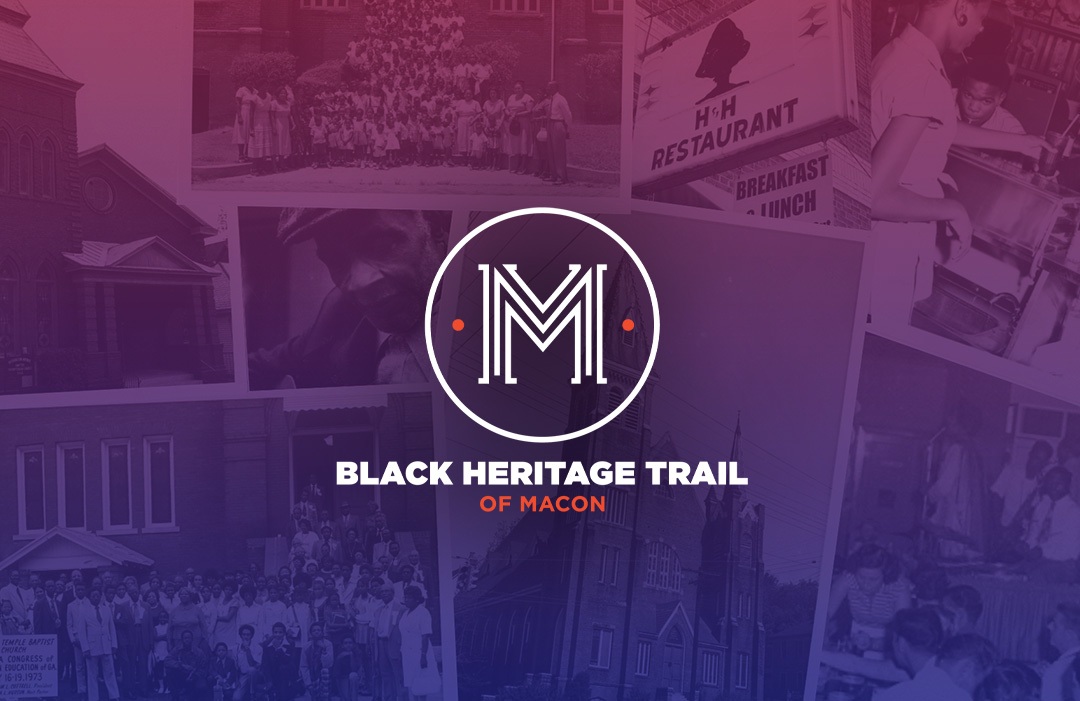
African American History
Macon's African-American heritage is not just a chapter in its history; it is a living, vibrant force that continues to shape our city's identity, fostering unity and inspiring future generations to create positive change.
You can find an interactive, accessible mobile app that explores thirty-seven African American historic and cultural sites that make up the very fabric of the black community of Macon in the 19th & 20th centuries. Simply download the "Tour Macon" mobile app and choose the "Black Heritage Trail" tour!

Tubman Museum
View the magnificent 63-foot-long mural centerpiece of the museum, "From Africa to America", created by Macon artist Wilfred Stroud. This mural presents a visual history of black people from their early days in Africa to current leaders and heroes. Learn of Harriet Tubman, Martin Luther King Jr., Otis Redding, Ellen Craft, Minnie Smith, and many more!

Douglass Theatre
Built in 1921 by black entrepreneur Charles Douglass, this restored historic theatre has hosted great like Ma Rainey, Bessie Smith, Ida Cox, and Cab Calloway. Macon's own Otis Redding was discovered here. The Douglass Theatre now pays tribute to the African-American influence on film and theatre. Enjoy live music, theatrical performances, and film viewings.

Macon Terminal Station
Built in 1916, the 13-acre Terminal Station was one of Georgia’s largest and most stunning transportation centers, boasting more than 100 departures and arrivals per day. Designed by Alfred T. Fellheimer, the same architect behind the design of Grand Central Station, the station boasted walls and floors made from opulent pink Tennessee Marble. Up until the 1960s, Jim Crow segregation was in full effect. After segregation was officially over in the South, there was much debate about whether to hide the remnants of that era, such as the carved signage reading “Colored Waiting Room.” Ultimately, the people of Macon decided to keep it as a reminder to not forget or erase the past. In 1975, the Terminal Station closed, but by early 2000, the City of Macon bought and restored the station and now uses it as an event venue.

Cotton Avenue Plaza
A "main street" of African American businesses for over 100 years. Historic Macon's Cotton Avenue District Walking Tour brochure documents the impact this area had on Macon's history and the current state of D.T. Walton Way and Forsyth Street.
Notable Maconites connected to Cotton Ave. include Jefferson Long, who was the first black man to be elected to the U.S. House of Representatives in 1871, and Rev. Pearly Brown, a renowned blind street singer who learned to play the guitar at the Georgia Academy for the Blind Colored and was the first black man to perform at the Grand Ole Opry. The D.T. Walton Building was home to two generations of the Walton family. Located in historic Downtown Macon.

Pleasant Hill Historic District
One of the first black neighborhoods listed on the National Register of Historic Places, with architectural, cultural, educational and religious resources. It includes the childhood home of "Little Richard" Penniman, and the former site of Beda-Etta College and the Dr. Bobby Jones Performing Arts Center. Pleasant Hill also produced the acclaimed black artist Henry W. Lucas, highly esteemed educator Dr. Robert Williams and a most outstanding civil rights leader, William P. Randall.
Linwood Cemetery on Walnut St. is a historic African-American Cemetery founded in 1894 that it is the final resting place of many of Macon's prominent citizens.

Holsey Temple CME Church
Holsey Temple CME Church has been an established African American Church in Macon for more than 150 years, originally constructed on Washington Avenue. After fire and tornadoes destroyed the church's original wooden structure, members rebuilt it into the brick structure that is standing today. Much of the church's original features still stand, like the original pews and windows.

First Baptist Church
First Baptist Church is considered Macon’s oldest African American church. When first established in 1835, blacks and whites worshipped at the First Baptist Church. The two acted largely as two distinct bodies, each led by ministers and deacons of their own color. By 1839, the number of black congregation members had outgrown the white congregation members by almost a hundred parishioners. Due to the lack of space, the black congregation members were forced to move their service to the parking lot until finally moving to the current location in 1897. The congregation grew to almost 2,000 members until part of their congregation departed to form Tremont Baptist Church.

More Resources





